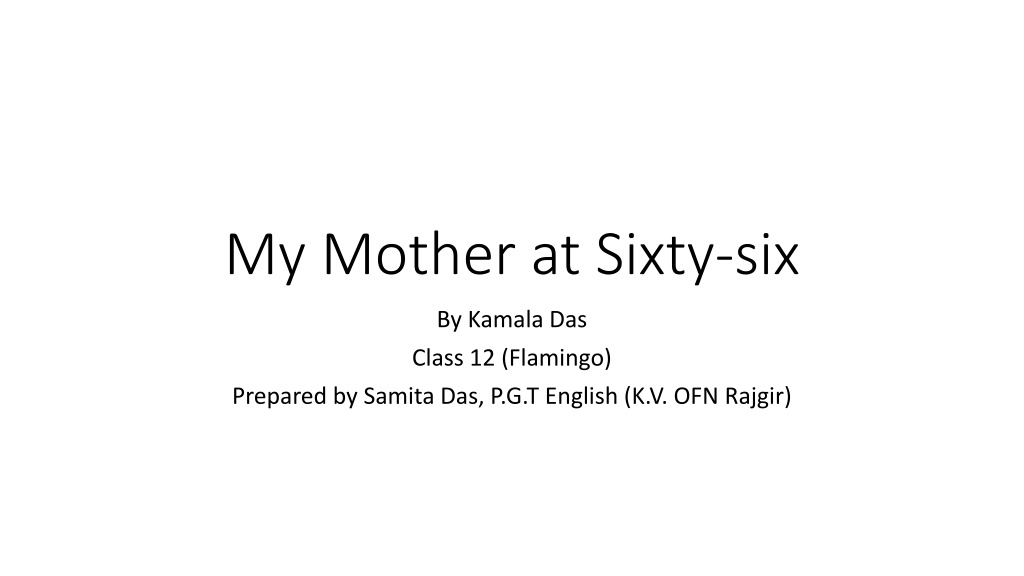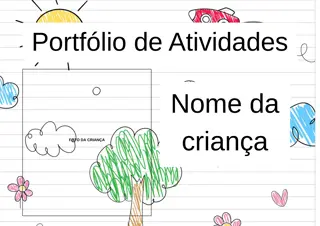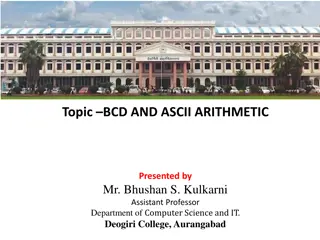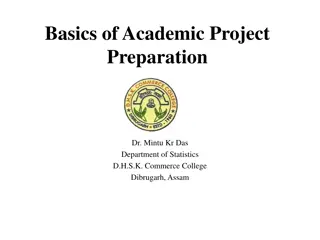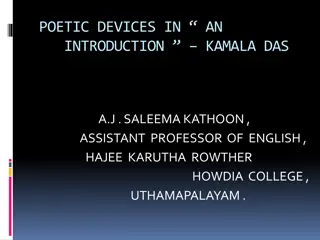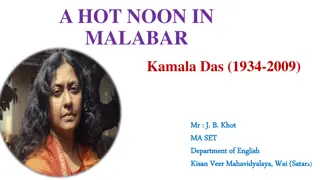Understanding "My Mother at Sixty-Six" by Kamala Das
Kamala Das' poem "My Mother at Sixty-Six" delves into the emotional complexities of a mother-daughter relationship as the daughter grapples with the inevitability of her mother's aging and mortality. Through confessional poetry, Das captures the daughter's fears and insecurities as she confronts the reality of her mother's advancing age, culminating in a poignant portrayal of love, loss, and acceptance.
Download Presentation

Please find below an Image/Link to download the presentation.
The content on the website is provided AS IS for your information and personal use only. It may not be sold, licensed, or shared on other websites without obtaining consent from the author. Download presentation by click this link. If you encounter any issues during the download, it is possible that the publisher has removed the file from their server.
E N D
Presentation Transcript
My Mother at Sixty-six By Kamala Das Class 12 (Flamingo) Prepared by Samita Das, P.G.T English (K.V. OFN Rajgir)
Introduction Introduction About the Poet: Kamala Das was a well known Anglo Indian poet, and a leading Malayalam author She was born in Thrissur, Kerala and later went to Calcutta She wrote Malayalam short stories under the pen-name, Madhavikutty She wrote English poems under the pseudonym Kamala Das She won the Sahitya Akademi award in 1985 Her love of poetry began at an early age, she was strongly influenced by her mother s poetry Her poetry is mostly identified as confessional poetry. Confessional poetry is a style of poetry that emerged in the United States during the 1950s. It has been described as poetry of the personal or I , focusing on extreme moments of individual experience, personal trauma. Her other important poems are An Introduction , The Sirens , Summer in Calcutta , The Old Playhouse and Other Poems
Overview of the Poem Overview of the Poem The poem, My Mother at Sixty-Six is also a confessional poem written in free verse. It gives the readers a glimpse of the subtle intricacies of a mother-daughter relationship. It is a sensitive portrayal of a daughter s anguish and fear on seeing her mother, who is in her twilight years. It poignantly captures the fears and apprehensions deeply embedded in the offspring s psyche. The daughter was very close to her mother, and nurtured a phobia that she would lose her mother to death. The poem is written only in one sentence, punctuated with commas, which hint at the flood of emotions that are triggered in the daughter by her mother s failing health.
Significance of the Title Significance of the Title The title of the poem, My Mother at Sixty-Six is significant because the poem is written from the perspective of a daughter who is afraid of losing her mother to death, as her mother is old and ageing and hence nearing death with every passing moment. The poem begins with the poet on the way to the airport and it is on the way in the car that the poet is struck with the realisation of the advancing age of her mother, while looking at her dozing face. The rest of the poem is about the confession of the poet regarding this realisation. She was afraid that it might be the last time she was seeing her mother alive and we find her sorrowful and insecure as she bid goodbye to her mother at the airport, trying to hide her fears by smiling .
Themes Themes Ageing and death: The poem revolves around the theme of advancing age and the fear that adheres to its loss and separation. It is a sentimental account of the mother s approaching end through the eyes if the daughter. Fear and anguish of a daughter: The poem centers on the confession of a daughter about the fear and anguish of separation from her mother, due to death. Mother and daughter relationship: In the poem we come acroos the beautiful bonding of the daughter with her mother. Although she stays away from the mother due to the circumstances, she loves her dearly and is afraid to lose her.
Explanation Explanation Driving from my parent s home to Cochin last Friday morning, I saw my mother, beside me, doze, open mouthed, her face ashen like that of a corpse and realised with pain The poetess was driving from her home to Cochin airport along with her mother who was 66 years old. It was a Friday morning. The mother was going to see her off. As the poet was driving, her mother was sitting beside her and taking a nap with her mouth open. Her face was dull and colourless just like a dead body. This made the poet scared and sad. She realised that her mother had grown old and might die soon.
Explanation Explanation That she was as old as she looked but soon put that thought away, and looked out at Young Trees sprinting, the merry children spilling out of their homes The poet realised that her mother was as old as she appeared but felt sad and uncomfortable to think of her mother s death and separation from her. So in order to divert her attention, she started looking out of the window of her car. She saw that the young trees were running back as she was driving ahead and young children were happily coming out of their homes to play and make merry.
Explanation Explanation The poet looked at her mother s face while checking into the airport and saw that her face was pale and colourless just like the moon of late winter which has lost its brightness. As she kept on looking at her, the fear of separation once again took over her and she felt it to be similar to her childhood anxiety of losing her mother. However, she did not show any of that fear on her face. She kept on smiling so that her mother would remain strong and also gave her the hope that they would be meeting again soon. But after the airport s security check, standing a few yards away, I looked again at her, wan, pale as a late winter s moon and felt that old familiar ache, my childhood s fear, but all I said was, see you soon, Amma, all I did was smile and smile and smile
Literary Devices Literary Devices Comparisons: In the poem, the mother s pale face has been compared with two things by the poet. First is the colourless face of a corpse, and the second is the dull moon of a winter night. When a person dies, blood circulation stops and the body becomes pale. The winter moon too, is not as bright as other times. Thus the poet finds similarity between the dull, colourless face of her mother and these two objects. Contrasts: When the poet tries to divert her mind from the disturbing thought of her mother s age, all she notices are the young trees(sprinting) and the young children(spilling), full of life and energy. Both these images are in direct contrast to the dozing and almost lifeless mother inside the car. Another contrast is presented when the poet, in order to hide her sadness, keeps smiling as she says goodbye to her mother.
Figures of Speech Figures of Speech My Mother at Sixty-Six : Alliteration Her face ashen like that of a corpse: Simile Young trees sprinting: Personification, Imagery Children spilling out: Metaphor, Imagery Wan, pale as a late winter s moon: Simile All I said was, see you soon : Assonance All I did was smile and smile and smile : Repetition
Home Assignment Home Assignment 1. What did the poet notice about her mother while driving? 2. Why did the narrator feel a pain at that time? 3. How are the trees and the children in direct contrast to the poet s mother? 4. What is the familiar ache referred to in the poem by the poet? 5. Why do you think the poet smiled while leaving? 6. Point out two poetic devices used in the poem.
